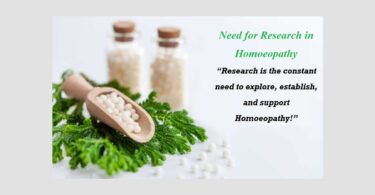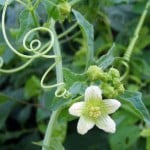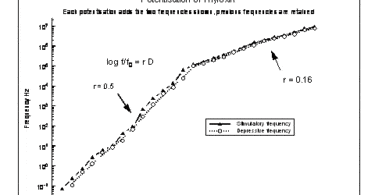ABSTRACT: Tonsillitis is one of the most common infections in children between 5-15 years. About 30 million children develop tonsillitis with frequent exposure to bacterial and viral infection. In homoeopathy we are considering susceptibility as a basic tendency of the living organism which is going to decide the well-being of a person. Susceptibility and immunity are interdependent; when tonsils are removed it may affect susceptibility of that person.
Various studies show almost all the cases responded well to homoeopathic medicines and the patient not only got rid of the main complaint of tonsillitis but also got rid of associated complaints. Also, surgical intervention was avoided. Thus, the studies concluded that homoeopathic medicine used with a holistic approach is very effective in treating tonsillitis.
The objectives of this study are:
1. To study clinical manifestations and etiological factors of tonsillitis in a paediatric age group.
2. To study homoeopathic drugs effective in the treatment of tonsillitis in children.
3. To study the effect of LM potencies in children for treatment of tonsillitis.
The following methodology is adopted;
1: Type of research: A Prospective case study
2: Sampling design: Simple random sampling.
3: Selection criteria: Based on the inclusion and exclusion criteria, history and clinical symptoms. The treatment is based on interpretation of clinical signs and symptoms
CONCLUSION: After the results were statistically analysed it showed that medicines of 50 millesimal potency have a significant role in the management of tonsillitis over the usage of centesimal potency.
KEYWORDS: Tonsillitis, Homoeopathy, LM potency, centesimal potency.
INTRODUCTION:
The tonsils are masses of lymphoid tissue located in the pharyngeal cavity. There are two pairs of tonsils, pharyngeal tonsils (adenoids), tubal tonsil, palatine tonsil, lingual tonsil. Their function is to filter and protect the respiratory and alimentary tract from invasion by pathogenic organisms and in antibody formation.
The immunological role of tonsils is to induce immunity and production of immunoglobulin. As tonsils are situated at the opening of the pharynx they may get infected frequently leading to chronic tonsillitis.
It is a very common condition, most frequent in children aged 5-10 years and young adults between 15 and 25 years. A general practitioner with a list of 2000 can expect to see around 120 cases of tonsillitis a year with considerable seasonal variations. About one out of ten children in India visit a doctor for tonsillitis in each year.
A previous cross sectional study in Belgaum was done in urban communities where there was increase in prevalence. Out of 300 subjects 5-15 years of age, 45.7% were male, 54.3% were females and most of the children belonged to nuclear families, residing in Pucca house.[1]
The commonest cause of tonsillitis is infection of the tonsils by micro-organisms. Certain bacteria (most common being the streptococcal group), viruses, and also allergens are known to produce tonsillitis. Allergens are usually in the form of certain food particles.
Signs and symptoms of tonsillitis include,
- Pain in the throat, sometimes severe and may last more than 48 hours, along with pain on swallowing.
- Pain may be referred to the ears.
- Small children may complain of abdominal pain.
- Headache.
- Loss of voice or changes in the voic
- The throat is reddened, the tonsils are swollen and may be coated or have white flecks of pus on them.
- Swollen regional lymph glands.
- Classical streptococcal tonsillitis has an acute onset, headache, abdominal pain and dysphasia.
- Examination shows intense erythema of tonsils and pharynx, yellow exudates and tender, enlarged anterior cervical glands.
- Possibly a high temperature.
Homoeopathic medicines are highly effective in management of such cases and with the flexibility in potencies the child gets the best suited medicine which treats him internally, securing from the recurrence of the same condition.
However, there is limited data and research exploring the full potential of homoeopathy, especially LM potency drugs in prescription for tonsillitis.
Prescription of LM potency in practice has still not come into the limelight and has not been explored for its fullest capacities regarding present scenarios especially in children.
This prospective study was focused on doing a comprehensive review and the exploration of Dr. Hahnemann’s discovery of LM potency or 50 millesimal scale potency in the clinical condition of tonsillitis and listing the common etiological factors that make this age group vulnerable to this infection.
Also, by prescribing the 50 millesimal potency we will be aiming towards the rapid and gentle healing of the patient eliminating their discomfort as quickly las possible.
MATERIALS AND METHODS:
Type of research: A Prospective case study
Sampling design: Probability method of simple random sampling procedure for subjects who presented with clinical signs of tonsillitis.
Selection criteria: 60 cases were selected from the OPD, IPD and school camps of A. M. Shaikh Homoeopathic Medical College and Hospital, Belagavi, on the basis of inclusion and exclusion criteria, history and symptoms.
Inclusion criteria:
- Subjects of age between 3-18 years
- Subject of all genders.
- Subjects who fulfil the diagnostic criteria.
- Subjects willing to participate and parents willing to sign written informed consent and assent taken from the subjects.
Exclusion Criteria:
- Subjects with other systemic illness or immune compromised children were excluded.
- Subjects under any other treatment.
- Diagnosed case of adenoids, obstructive sleep apnoea, quinsy and acute rheumatic fever.
- Complicated cases such as peritonsillar abscess, otitis media and para pharyngeal abscess are excluded.
RESULTS
The study was conducted between October 2017 and August 2019 and sufficient time was allowed to understand and analyse the outcome. At the end of the study the following data was observed which is placed in tabular form.
1) Age Incidence: Statistical study was done to identify the age group with highest incidence as shown in Table No.1.
Table No. 1 – Age Incidence
| Sl.No. | Age in years | No.of Subjects | Percentage |
| 1. | 3 to 6 | 6 | 10% |
| 2. | 7 to 11 | 34 | 56.6% |
| 3. | 12 to 14 | 16 | 26.6% |
| 4. | 15 to 18 | 4 | 6.6% |
| Total | 60 | 100% |
As shown in table, maximum incidence of tonsillitis was seen in age group 7 -11yrs 56.6% of the subjects (34); 26.6% of subjects were in the age group of 12-14yrs (16); 10% of subjects were in the age groups of 3-6yrs(6);6.6% of subjects were in the age group of 15-18yrs(4).
2) Sex Incidence: Statistical study was done to identify the sex incidence with highest incidence as shown in Table No.2
Table No. 2 –Sex Incidence
| Sl.No. | Sex of subjects | No. of Subjects | Percentage |
| 1. | Male | 37 | 61.6% |
| 2. | Female | 23 | 38.3% |
| Total | 60 | 100 % |
As shown in table above, 61.6% of the subjects (37) were males and 38.3% of the subjects (23) were females.
3) Incidence of Presenting Complaints: In the statistical study of 60 cases, each subject is presenting with one or more complaints, the presenting complaints are shown in table no.-3.
Table No. 3 – Incidence of Presenting Complaints
| Sl.No. | Symptoms | No. of Subjects | Percentage |
| 1. | Pain in throat | 55 | 91.1% |
| 2. | Difficulty in swallowing | 48 | 80% |
| 3. | Redness of pharynx and tonsils | 38 | 63.3% |
| 4. | Pus pockets | 33 | 55% |
| 5. | Swollen regional lymph nodes or tonsils | 51 | 85% |
| 6. | Possible high temperature | 20 | 33.33% |
| 7. | Congestion of the throat and cough | 13 | 21.6% |
| 8. | Loss or change of voice | 8 | 13.3% |
| 9. | Others | 6 | 10% |
Table 4: Remedies prescribed
| S.no | Remedies | No. of Patients |
| 1. | Phytolacca | 08 |
| 2. | Merc iod flavus | 06 |
| 3. | Baryta carb | 10 |
| 4. | Belladona | 23 |
| 5. | Aconite | 01 |
| 6. | Hepar sulph | 05 |
| 7. | Baryta mur | 01 |
| 8. | Nitric acid | 02 |
| 9. | Kali mur | 01 |
| 10. | Lachesis | 01 |
| 11. | Merc sol | 01 |
| 12. | Calcarea carb | 01 |
| Total | 60 | |
5) POTENCY USED: the following remedies and potencies are used in the study:
Table 5
| Sl.no | Potency | No. of patients |
| 1. | Centesimal | 30 |
| 2. | 0/1 (LM) | 12 |
| 3. | 0/2 (LM) | 18 |
| Total | 60 |
6) RESULTS:
Result of Treatment: In the statistical study of 60 cases the results of the
Treatments are summarized in Table No.6 below.
| Sl. No. | Results | No. of Subjects | Percentage |
| 1. | Recovered | 50 | 83.3% |
| 2. | Improved | 7 | 11.6% |
| 3. | Not Improved | 3 | 5% |
| Total | 60 | 100% |
DISCUSSION
In this study various observations were made to assess the susceptibility of children in acquiring tonsillitis. Susceptibility was assessed considering age, sex, intensity of symptoms, habit and environment, temperament and constitution.
Various factors responsible for tonsillitis like socioeconomic status, locality, vaccination, overcrowding, hygienic measures, nutrition, health awareness and seeking treatment were observed during this study. The study also shows positive treatment response with homoeopathic medicines in early treatment of tonsillitis.
In homoeopathy the patient is treated, rather than the disease. In acute illness, the patient’s changes from the normal are taken into account. Homoeopathic remedies are prescribed holistically rather than for one part. The homoeopathic system of medicine with its unique Similia principle and with its individualistic approach helps to overcome the acute deviation from health, helps to decrease the duration of acute phenomenon and prevents hospitalization.
- From the study it was found that after the use of homoeopathic medicines there was statistical improvement in cases of tonsillitis. The results of treatment were clearly shown in recovery of 50 cases and no improvement in 3 cases. The Chi-Square test was observed to be significant based on the p-value (0.028<0.05) which is less than the standard 0.05 value as assumed for the test.
- The study also showed common disease presentation of tonsillitis i.e. pain in throat, difficulty in swallowing, redness and swelling of tonsils, pus pockets, temperature etc. But from a homoeopathic point of view the clinical presentation in patients had some uncommon peculiar individualizing symptoms which helped in framing the acute totality and selection of medicines.
- The study also showed the role of susceptibility in both acquiring the disease in children and its selection of homoeopathic medicines and potency.
- The study shows that there is a maximum age incidence of tonsillitis in the age group of 7-11years, and 12-14 years, than by the age group >3-6 years. It shows that that the age group of 7-11years has the highest incidence of tonsillitis in pediatric age group .
- The study shows that the incidence of tonsillitis is more in males than females.
- The study also shows that the homoeopathic remedies Belladonna, Phytolacca, Baryta carb, Mercurius iodatus flavus and Hepar sulph are helpful in treatment of tonsillitis. It shows that remedies selected on the basis of acute totality comprising both short acting and long-acting drugs are effective in the treatment.
CONCLUSION
This study which was conducted on 60 subjects in a paediatric age group concentrated mainly on utilization of 50 millesimal remedies in treating tonsillitis.
Pain in throat, which was the most common symptom in this study responded well to the medicines of 0/1 potency and also the subjects showed increased general wellness.
The above study revealed the significant effect of individualized homoeopathic medicines in treatment and management of tonsillitis. The rapid and accurate detection, early treatment and management with specific homoeopathic therapy, management of co-morbid conditions, and efforts at primary prevention help to overcome the acuteness and severity of tonsillitis in children. Hence, it may be concluded that 50 millesimal drugs are efficient in the treatment of tonsillitis.
REFERENCES:
- http;//www.ijims.com-Prevelance of group A streptococcal infection among children of urban community, A cross sectional study –Assessed on 11;08AM on 06/03/2018
- Parthashastry A ,IAP textbook of pediatrics published by jaypee brothers medical publishers (P) ltd, B-3 EMCA House .23/23B Anssari road , Daryaganj Post box 7193 ,New Delhi 110 002, India. First Edition; Feb1999. Reprint; June 1999
- Kliegman, Behrman, Jenson and Stanton. Nelson Text book Of Paediatrics.18th e/. vol 2:1756
- Little, David, Dosage and potency according to Organon .This article was presented in The American Homoeopath, the Journal of the North American Society of Homoeopaths, 1998, page 128.http://www.simillimum. com/education/little-library/case-management/dpato/article.php accessed on 28/01/2019
- SchepperDL, LM potencies: one of the hidden treasures of the sixth edition of the Organon Volume 88, Issue 3, June 1999, Pages 128-134 https://www.sciencedirect.com/science/article/pii/S1475491699903090; accessed on 6/02/2019
- J. T, Repertory of the Homoeopathic Materia Medica .6/e. B. Jain Publishers (p) Ltd. New Delhi 2012;460-461
- Murphy Robin. ND. Homoeopathic Medical Repertory 2/e. B. Jain Publishers (P) Ltd. New Delhi 2006 2008; 1837
- Boericke, William. Pocket Manual of Homoeopathic Materia Medica and Repertory. B. Jain Publishers (P) Ltd. New Delhi 2012; 514-516.
- W.H. Physiological Materia Medica.3/e. B Jain Publishers (p) Ltd. New Delhi 2009;716-720
- S.R. Materia Medica of Homoeopathic Medicines. 2/e.B. Jain Publishers (p) Ltd. New Delhi 1999;558-561
- Allen, H.C, M.D. Keynotes Rearranged and classified .10/e. Indian Books and Periodicals Publishers. New Delhi.2013;308-309




